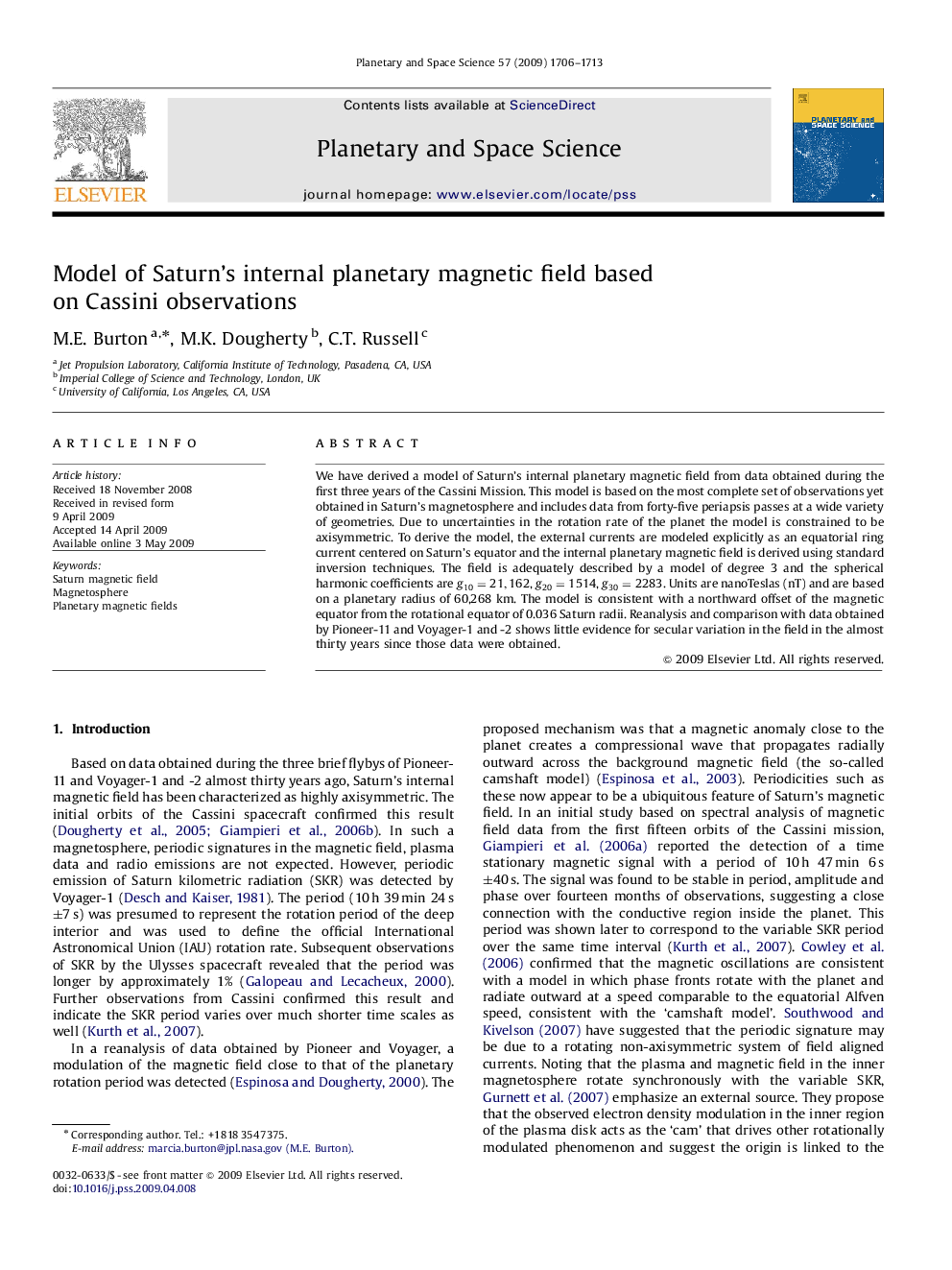| Article ID | Journal | Published Year | Pages | File Type |
|---|---|---|---|---|
| 1781926 | Planetary and Space Science | 2009 | 8 Pages |
We have derived a model of Saturn's internal planetary magnetic field from data obtained during the first three years of the Cassini Mission. This model is based on the most complete set of observations yet obtained in Saturn's magnetosphere and includes data from forty-five periapsis passes at a wide variety of geometries. Due to uncertainties in the rotation rate of the planet the model is constrained to be axisymmetric. To derive the model, the external currents are modeled explicitly as an equatorial ring current centered on Saturn's equator and the internal planetary magnetic field is derived using standard inversion techniques. The field is adequately described by a model of degree 3 and the spherical harmonic coefficients are g10=21,162g10=21,162, g20=1514g20=1514, g30=2283g30=2283. Units are nanoTeslas (nT) and are based on a planetary radius of 60,268 km. The model is consistent with a northward offset of the magnetic equator from the rotational equator of 0.036 Saturn radii. Reanalysis and comparison with data obtained by Pioneer-11 and Voyager-1 and -2 shows little evidence for secular variation in the field in the almost thirty years since those data were obtained.
